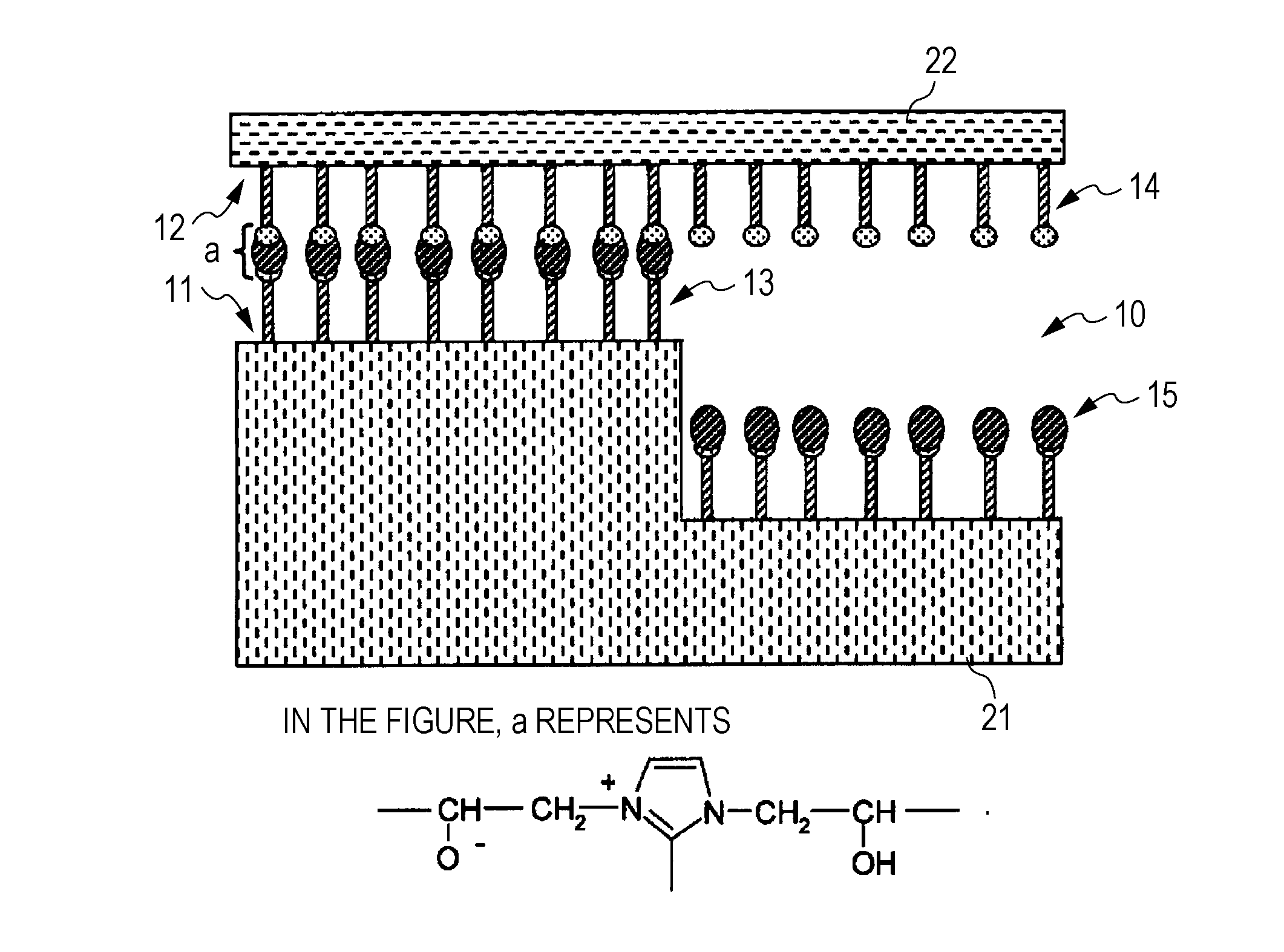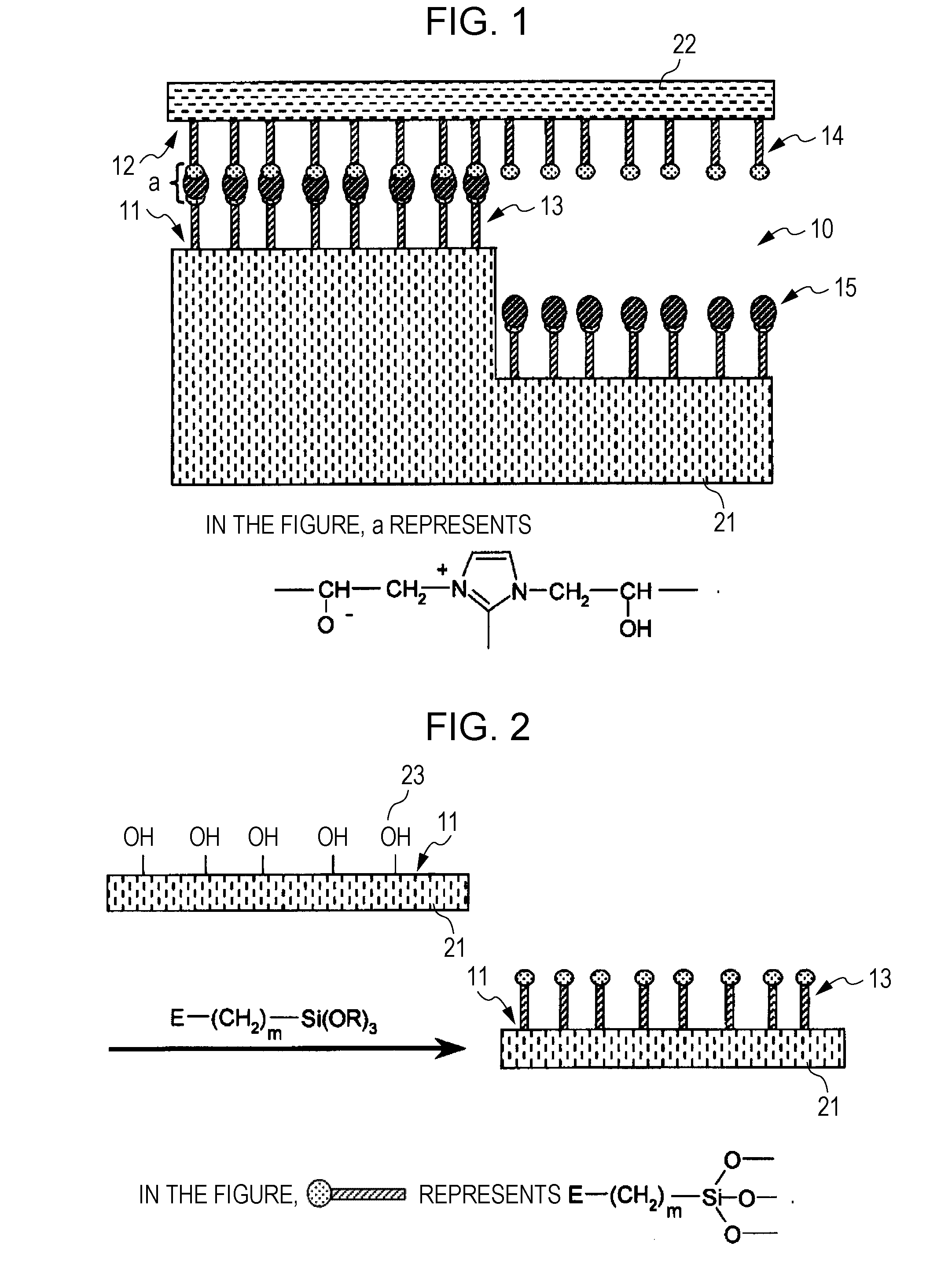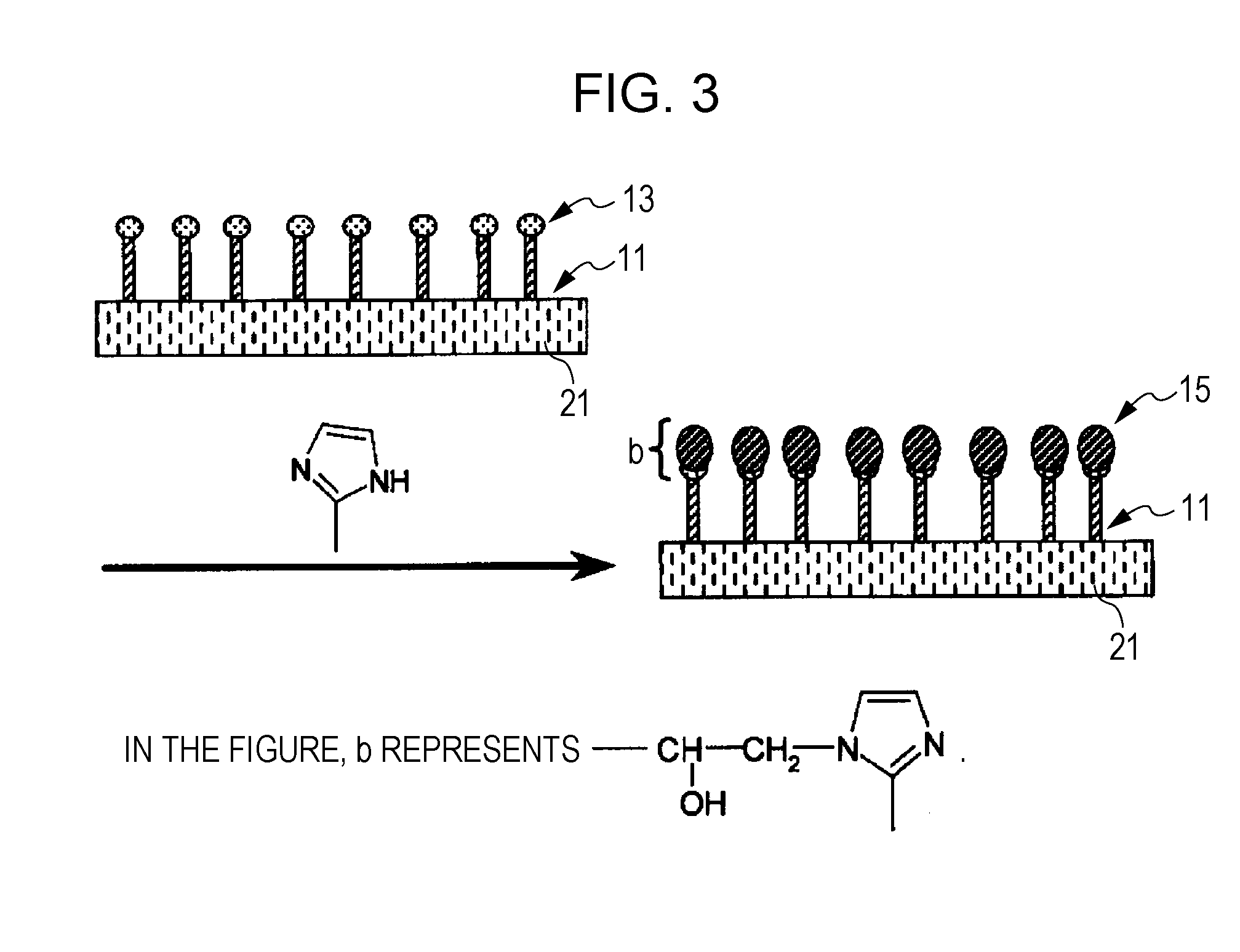Adhesion method, and biochemical chip and optical component made by the same
a biochemical chip and optical component technology, applied in the direction of adhesion process with surface pretreatment, biomass after-treatment, synthetic resin layered products, etc., can solve the problems of difficult to achieve adhesion of an optical member such as a lens, difficult to achieve adhesion with no clearance, etc., to suppress thermal distortion generation, the degradation of optical properties due to discoloration, and the fine structure formed on the joining surface or optical properties.
- Summary
- Abstract
- Description
- Claims
- Application Information
AI Technical Summary
Benefits of technology
Problems solved by technology
Method used
Image
Examples
example 1
Production of Biochemical Chip
(1) Formation of Monomolecular Film of Film Compound Having Epoxy Group on Joining Surfaces of Biochemical Chip Substrates
[0105]A pair of glass biochemical chip substrates (a channel having a channel width in the range of 10 to 100 μm and a depth of about 50 μm was formed on one of the substrates by photolithography and wet etching) were prepared, sufficiently washed and then dried.
[0106]Subsequently, 0.99 parts by weight of 3-glycidyloxypropyltrimethoxysilane (Chem. 10, manufactured by Shin-Etsu Chemical Co., Ltd.) and 0.01 parts by weight of dibutyltin bisacetylacetonate (condensation catalyst) were weighed and then dissolved in 100 parts by weight of hexamethyldisiloxane to prepare a reaction mixture.
[0107]The reaction mixture thus prepared was applied onto a joining surface of each of the substrates and allowed to react in air (relative humidity: 45%) for about two hours. Subsequently, washing was performed with chloroform to remove excess alkoxysil...
example 2
Production of Cemented Lens
[0110]Adhesion of a cemented lens was achieved by the same method as in Example 1 using two lenses for a cemented lens. Regarding the resulting cemented lens, discoloration, distortion of the field of view, aberration, interference fringe formation, or the like was not observed.
PUM
| Property | Measurement | Unit |
|---|---|---|
| surface roughness | aaaaa | aaaaa |
| surface roughness | aaaaa | aaaaa |
| pressure | aaaaa | aaaaa |
Abstract
Description
Claims
Application Information
 Login to View More
Login to View More - R&D
- Intellectual Property
- Life Sciences
- Materials
- Tech Scout
- Unparalleled Data Quality
- Higher Quality Content
- 60% Fewer Hallucinations
Browse by: Latest US Patents, China's latest patents, Technical Efficacy Thesaurus, Application Domain, Technology Topic, Popular Technical Reports.
© 2025 PatSnap. All rights reserved.Legal|Privacy policy|Modern Slavery Act Transparency Statement|Sitemap|About US| Contact US: help@patsnap.com



